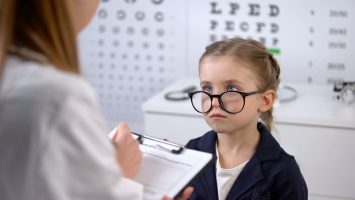The Infamous Warren
Warren. That was his name. I didn’t know him, but I knew he was a bad kid. He was getting busted by our teacher every day.
In 1983 at Julia Shannon Elementary School, I had music class twice a week during fourth grade. Every time my class lined up and shuffled into the music room, Warren’s name was already on the chalkboard. I assumed he’d already had music class that day and had broken the rules. The music teacher was patient, but when she got angry at someone, she’d write their name on the chalkboard under Warren’s name.
Getting your name on the board was a “first strike,” and any subsequent bad behavior got you a one-way ticket to the principal’s office, where Warren had probably taken up permanent residence.
For the first half of fourth grade, my assigned seat in music class was at the back of the room. But after the Christmas holiday, the teacher reshuffled the seating chart, which put me right up front – just a few feet away from the chalkboard.
That’s when I noticed that the infamous Warren, who I’d built up in my mind as a dangerous fourth-grade rebel, was not even a real person. The name “Warren” had never been on the board at all. People who misbehaved in class got their name written below the word “Warning” – not Warren.
That was the first day I realized my vision wasn’t great. I could see fine when I was close to the board, but if I was midway or any farther back, “Warning” became “Warren.” Everything else melted into a blur. 
I didn’t tell my mom because, by the time I’d reached 4th grade, I knew getting glasses was only slightly less embarrassing than accidentally peeing your pants at recess or throwing up during a school assembly. So, I squinted and faked clear vision for an entire year.
But in 5th grade, the school nurse administered vision screening tests, and I failed miserably. A few weeks later, I had glasses and what felt like full-fledged nerd status.
By 8th grade, I’d convinced my parents to let me try contact lenses. With practice, I became a pro at getting contacts in and out and felt free again. No raindrops on lenses. No fogging up on cold days. No smudges, scratches or glasses falling off during gym class.
Four decades later, I still wear contact lenses daily and love them as much as ever. But lately, I’m having flashbacks to fourth-grade music class. Except this time, I’m not squinting at Warren’s name in the distance. This time it’s right in front of my face – the menu, a medicine bottle, the microscopic directions on the packaging of anti-aging skincare products.
What’s a nearsighted girl to do when even her close-up vision gets wonky? The contacts that let me see into the distance can’t help with this problem. I’m stuck in the blurry middle.
My husband Tom, who is five years older than me, warned me this would happen, and he said the eyes are the first to go. He used to wear contacts, too, but then he made his middle-age peace with bifocals. But my inner fourth grader screamed, “No! I won’t do it!”
Lucky for me, fashion has changed since fourth grade. The black-rimmed “readers” my school librarian used to wear are now available in a cascade of colors, patterns, and shapes. Even Oprah Winfrey says they’re cute, and I believe her.
So now I have readers – which I have lovingly nicknamed “Warrens” – spread throughout the house. Here a pair, there a pair, everywhere a pair there. When they’re not on my face, they’re perched on my head. Most of the time, I remember they’re up there, but not always, hence the need to sprinkle them around like parmesan on a pizza.
And to the non-existent “Warren,” who never committed heinous crimes in fourth grade, I officially declare you “not guilty.” I’m sorry for the terrible reputation I gave you before I realized my vision is only reliable within spitting distance. You were never a bad kid. I just couldn’t see it.
Gwen Rockwood is a syndicated freelance columnist. Email her at gwenrockwood5@gmail.com. Her book is available on Amazon.
